Your session is about to expire
The Ultimate Guide to Understanding Cystic Fibrosis
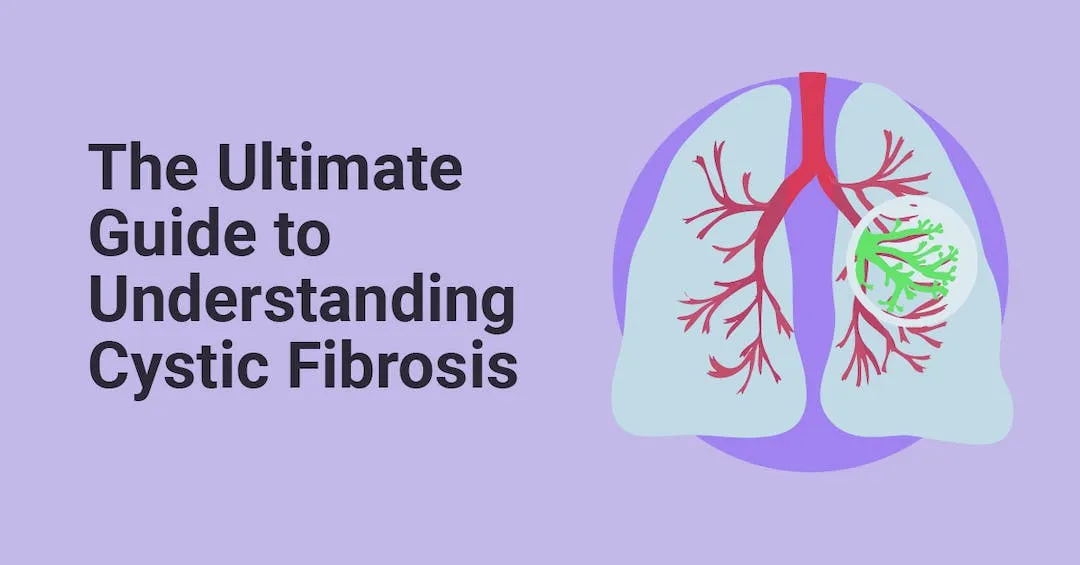
Learning How To Live With Cystic Fibrosis!
Over 70,000 people¹ around the world are currently living with Cystic Fibrosis (CF). With 1000 more people getting diagnosed every year in the US alone.
Cystic Fibrosis is a genetic disease that affects the CFTR protein's ability to function properly. Over time this causes a series of infections in the lungs and can make it very difficult to breathe.
It is believed that humans have probably always suffered from Cystic Fibrosis and there is some literature from the medieval period that makes reference to a very similar disease. However, it wasn't until 1989 that the cause of Cystic Fibrosis was discovered.
The CFTR gene was discovered and scientists were able to link the gene to the disease. This discovery led to a series of treatments being developed to improve the lives of Cystic Fibrosis patients.
The disease is genetic, children are born with Cystic Fibrosis because both their parents were carriers of the CF gene - they are called carriers. It is possible to screen parents for the faulty gene before they have children.
There is currently no cure for the disease, but there are many Cystic Fibrosis clinical trials² in process, looking to find new treatments and possibly one day a cure. Doctors are also working on new ways to screen parents for the CFTR gene.
Today, we are going to be taking a deep dive into Cystic Fibrosis. We will be looking at what the disease is, the history of the disease, its symptoms, and how to live with the disease.
What Is Cystic Fibrosis?
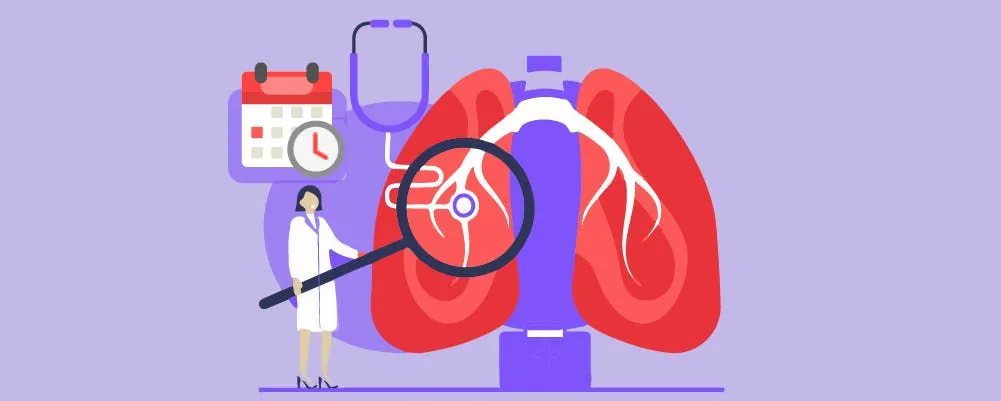
Cystic Fibrosis is a genetic disease that affects the mucus that covers most of our organs.
Cystic Fibrosis is caused by the mutation in the cystic fibrosis transmembrane conductance regulator (CFTR) gene.
This gene changes the way the CFTR protein functions. Its job is to move chloride to the surface of cells. The chloride in the cells attracts water and keeps the mucus thin. When the protein is not working properly, this does not happen and the mucus becomes too thick.
When the mucus is too thick, it mostly affects the lungs. But the pancreas can also be affected.
The thicker mucus gets trapped in the lungs and in the airways leading to the lungs. Not only does it block the airways but it becomes a hotbed for bacteria. These blockages cause regular and serious infections, as well as inflammation and respiratory failure.
This is the reason why one of the minor treatments for Cystic Fibrosis is to avoid coming into contact with germs and high levels of bacteria.
When the thicker mucus covers the liver it can block the bile ducts - which can lead to liver disease being developed. The mucus can also affect the way the pancreas functions. When covered in the mucus the pancreas may not be able to release any digestive enzymes. These are the enzymes that our bodies use to break down our food. A partially functioning pancreas can result in malnutrition and slow growth.
Cystic Fibrosis is a genetic disease that is passed on by parents. Cystic Fibrosis is developed when both parents are carriers of the CFTR gene. The parents themselves will experience no symptoms and there might even be no history of Cystic Fibrosis in the family. But if both parents are carriers their child can develop it.
75% of Cystic Fibrosis³ diagnoses happen before the age of 2. Babies that cough a lot, don't sweat, and eat a lot but grow slowly are tested for the disease.
70 years ago, a Cystic Fibrosis diagnosis would mean that the child wouldn't be expected to live to the age of 10.⁴ However, the development of treatment in the past 50 years has meant that 80% of Cystic Fibrosis⁵ patients now live to be over the age of 40, in America.
Marlene Pryson⁶, who works for the Cystic Fibrosis Foundation is believed to be the oldest person with cystic fibrosis in the world. She is 87 years old and has dedicated her life to supporting others who have the disease.
The History Of Cystic Fibrosis
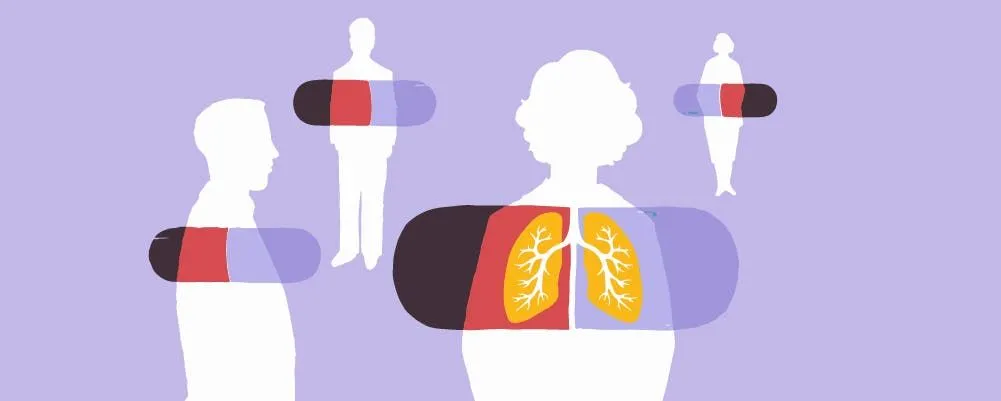
Many people may find this hard to believe but the majority of what we know about Cystic Fibrosis we have learned in the last 70 years. However, it is believed that Cystic Fibrosis is something that has always occurred in humans.
Historians believe that the composer Frederic Chopin (1810-1849), famous for his Nocturnes, suffered from a mild form of Cystic Fibrosis.⁷
In this section, we are going to look at the history of the disease and how we learned so much about it.
Discovery
As we mentioned above, there is lots of evidence to suggest that Cystic Fibrosis has been prevalent for hundreds if not thousands of years.⁸
There are records of people suffering from diseases or "curses'' who displayed multiple Cystic Fibrosis symptoms. It is worth paying attention to any mentions of salty skin because that is fairly unique to Cystic Fibrosis.
As well as Chopin having Cystic Fibrosis, there are manuscripts from the middle ages that make note of slow-growing children with salty skin.⁹ These manuscripts also commented on damage to the pancreas. All of these are common symptoms of Cystic Fibrosis.
Some records suggest that babies that were born with something similar to Cystic Fibrosis were thought to have been cursed by witches.¹⁰
Due to the very vague understanding of the body that humanity had before the 19th and 20th centuries, there was no treatment for Cystic Fibrosis, no name for the disease, and no way to diagnose anyone with it.
Eventually, the term mucoviscidosis¹¹ was used to describe what we now know as Cystic Fibrosis. This term just noted that the mucus would thicken and damage the lungs - there was no greater understanding of what was happening in the body.¹²
Even with the name, survival rates still remained fairly low. Most babies who had the illness were not expected to live past the age of twenty.¹³ Thankfully, in 1938 things began to change.
The Beginning
Dorothy Andersen¹⁴ was a pathologist doing research in malnutrition related deaths in children. She was looking for a common cause or way to reduce these deaths.
Before Anderson's work, the disease was known as mucoviscidosis. However, she was able to note the disease was caused by a problem with the pancreas and that the mucus affected the pancreas's ability to help the children digest their food. She named the disease "Cystic Fibrosis of the Pancreas".¹⁵
A small amount of work was done on the disease between Anderson's discovery and the formation of a panel by the US Cystic Fibrosis Foundation. The Foundation wanted to establish what were symptoms of Cystic Fibrosis¹⁶ and what weren't - in the hope that it would make diagnosis quicker and easier for doctors.
During this time, the sweat test¹⁷ was developed. As excessive salt was present in the sweat of Cystic Fibrosis¹⁸ sufferers, it was an effective test that could be used to screen children in a non-invasive way. This test is still used today.
The panel also noted that malnutrition was another key symptom of Cystic Fibrosis - along with coughing and wheezing; repetitive pancreatitis; and repetitive lung infections.
At this time, in both the US and the UK, many treatments were being trialed for Cystic Fibrosis.
One of the most popular treatments was to have the patient sit in a mist tent.¹⁹ This was a tent full of warm, moist air. The hope was that the patient would breathe in the moisture and the moisture would break down the mucus.
They had also experimented with tipping Cystic Fibrosis patients upside down²⁰ and trying to drain the mucus out of them. You won't be shocked to hear that this method didn't work.
The CFTR Gene
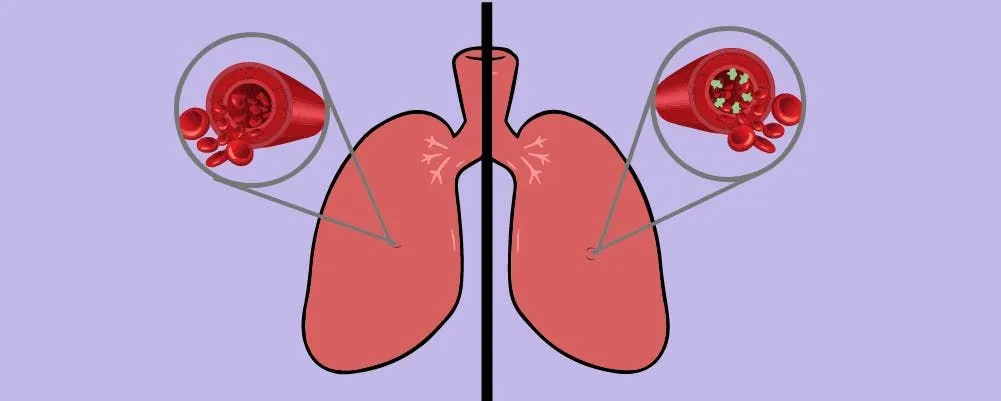
Perhaps the two most important moments in the story of Cystic Fibrosis, so far, happened in the 1980s. One happened at the dawn of the decade and the other happened at the very end.
The first key discovery was made in 1980²¹ when researchers from the University of North Carolina discovered what was happening to the chloride and sodium ions inside Cystic Fibrosis cells.
They worked out that these two types of ions were not behaving in the right way and this was why no water was being attached to the mucus.
This was a particularly incredible discovery because they were able to discover how the cells were working about a decade before the relevant technology was created.
The second discovery would completely change the way Cystic Fibrosis was seen and treated.
In 1989, Dr. Lap-Chee Tsui²² and his team in Canada discovered the CFTR gene.²³ This is the gene that causes the Cystic Fibrosis mutations. This discovery was significant for people with Cystic Fibrosis - but it also changed modern medicine.
The CFTR gene²⁴ was the first disease causing gene ever to be discovered. The work of Dr. Lap-Chee Tsui and his team opened the door for more discoveries and research that has saved so many lives.
The work that Dr. Tsui and his team did took them 4 years, with modern technology we can do the same amount of work in a single afternoon.
When the gene was first discovered, it was thought that gene therapy could be used to treat Cystic Fibrosis. However, in the past 30 years, over 2000 versions²⁵ of the CFTR gene have been discovered. This suggests that most people would have to have personalized gene therapy and the technology hasn't caught up with this concept yet.
Symptoms Of Cystic Fibrosis

Over the past 50 years, the Cystic Fibrosis Foundation and a group of medical bodies have put together a list of common symptoms of Cystic Fibrosis.²⁶
Cystic Fibrosis does not look the same in everyone. However, there are some symptoms (like salty skin and coughing) that most sufferers exhibit.
Below, you will find a detailed breakdown of some of the most common symptoms of Cystic Fibrosis.
If you have any concerns about your own health or the health of someone you know, you should speak to a medical professional.
Very salty-tasting skin
This is one of the most common symptoms. You will remember that it was one of the symptoms that were referred to in the medieval manuscripts.
The body's inability to use chloride and sodium ions correctly is what causes all the symptoms and side effects of Cystic Fibrosis.
The chloride and sodium ions do not pass normally through the cells that line the sweat glands. So, they end up getting excreted from the body in sweat. This is why Cystic Fibrosis sufferers can end up with salty skin.
The excess salt in the sweat was first noticed in the early 20th century and the "sweat test" was developed to screen for the disease. This is a simple and non-invasive test, which makes it perfect to do on babies and other young children.
Despite the simplicity of this test, it is still used today as part of the first round of testing for the disease.
Many people expect this sweat to have a different texture, but it does not. The only real difference between it and less salt sweat is the smell and the amount of salt that is left on the skin after it evaporates.
Persistent coughing, at times with phlegm
Coughing persistently is another common symptom of Cystic Fibrosis.
Coughing is a natural function of our bodies. It happens when our bodies are trying to remove something from our airways. This is why we cough when we get something stuck in our throat or after we swallow too much water.
Sufferers of Cystic Fibrosis, when not being treated, tend to have a lot of thick mucus in their airways. And they frequently cough when their body is trying to dislodge the mucus in their airways.
This can come up when they cough as thick and sticky phlegm. It may be clear, it may be milky.
Frequent lung infections including pneumonia
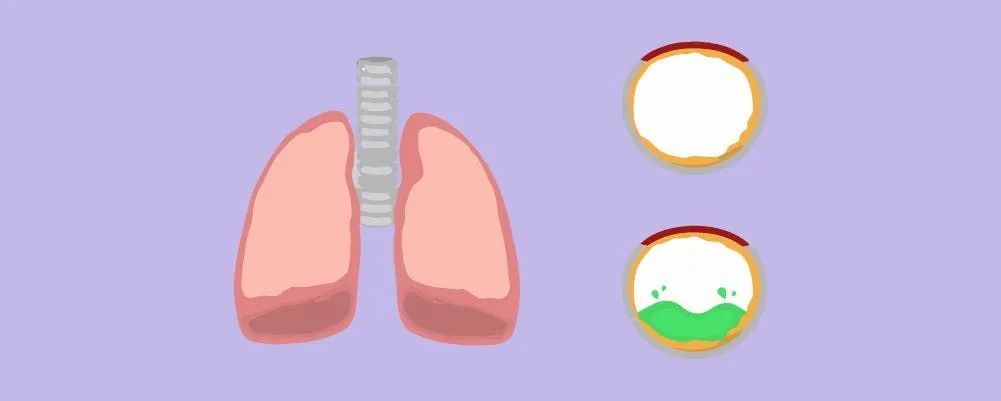
The mucus in the airways of a Cystic Fibrosis sufferer can be really thick. So thick, that it can pool in the airways and sometimes in the lungs.
These pools of mucus can be really dangerous because they create the perfect place for bacteria to breed and cause infection.
One infection that people with Cystic Fibrosis are particularly vulnerable to is pneumonia. Pneumonia can permanently damage the lungs, make it difficult for the patient to breathe, and it can put the sufferer in hospital.
That last one is particularly dangerous for people with Cystic Fibrosis because being exposed to more germs, especially new types of germs can cause them serious problems.
Bronchitis
Bronchitis²⁷ is another infection that people with Cystic Fibrosis are particularly vulnerable to.
Bronchitis is another infection that attacks the lungs. It often strikes after another illness has weakened the immune system.
Bronchitis causes violent coughing fits and depending on whether it is chronic or acute, it can last anywhere between 3 weeks and 2 years. It is particularly dangerous for people with underlying heart and lung conditions.
Bronchitis is typically treated with non-steroidal anti-inflammatory drugs (NSAIDs), bed rest, and lots of fluids.
Wheezing or shortness of breath
The pooling of fluid and thick mucus in a person's airways from the disease is a typical symptom of Cystic Fibrosis, and because of this many sufferers of the disease suffer from shortness of breath and may be wheezy.
Because this symptom is very apparent from a young age, Cystic Fibrosis is typically diagnosed before the age of two. It is one of the most common symptoms of the disease. A baby struggling to breathe is an early sign of the disease.
Sufferers of Cystic Fibrosis are typically given mucus thinning medication. Something they either take as a liquid or use a pump similar to an asthma inhaler to breathe in.
Poor growth or weight gain in spite of a good appetite
Cystic Fibrosis does not only affect the lungs, it can also cause problems in other areas of the body - most notably the pancreas.
When the thick mucus settles over the pancreas, it can block the vents through which it releases the proteins we need to function.
The digestive enzymes are the ones that are most commonly affected by this. When these proteins and enzymes are not released, people who have cystic fibrosis aren't able to take the nutrients they need out of their food or even digest their food properly.
This can stunt their growth, but they will still feel hungry all of the time.
Frequent greasy, bulky stools or difficulty with bowel movements
This is another side effect of not being able to digest their food properly. When the right enzymes and proteins are not being released by the pancreas the stomach and the digestive system cannot function.
Because of this, the body is unable to properly form stools. They are often too large, too solid, and generally difficult to pass. They will also come out looking strange because the intestines will not be lined with the typical enzymes that make stools look how we expect them to (brown, soft, small).
Nasal polyps
Nasal Polyps²⁸ are another common symptom of Cystic Fibrosis.
Nasal Polyps are small but benign growths that appear in the nasal passage. They are harmless but can be quite tender.
The problem with nasal polyps is that they can grow to be quite large and they have been known to block the entire passageway when left untreated.
Nasal Polyps can be treated with a nasal spray and may even go down on their own. However, if they show no signs of improvement, your doctor may recommend having them surgically removed.
They can be a problem for people with Cystic Fibrosis because they make breathing more difficult and they can increase the chance of getting sinus infections.
Chronic sinus infections
Not only does the thick mucus make infections in the airway and in the lungs more common but it also increases the chances of you getting sinus infections.
These can be incredibly painful and make it even harder to breathe. It is not uncommon for people with Cystic Fibrosis to develop chronic sinus infections that can last for months.
Along with taking the painkillers and medication recommended by your doctor - it has also been proven that a saltwater solution can be used to help clear congestion in the nose.
Clubbing or enlargement of the fingertips and toes
Clubbing of the fingers and toes²⁹ is a common symptom of Cystic Fibrosis as well as many other underlying health conditions. Because of this, there are many different causes of clubbing in the body.
Clubbing typically takes the form of swelling at the end of your fingers or toes. It is typically painless but your fingers may feel warm and itchy. They may also feel numb.
You may notice that the swelling causes a change in how your fingernails it on your fingers. However, it is very unlike that they will fall off or get infected.
Rectal prolapse
Due to the body not being able to digest food properly or form stool correctly, going to the bathroom can be a long and painful process for people with Cystic Fibrosis.
This inability to form proper stool has a knock-on effect on the rest of the digestive system, not only does it cause pain in the intestines but it can also cause rectal prolapses.
When prolapses are very minor, using stool softening medication can treat it, however, larger prolapses are usually treated by surgery.
Once a more significant prolapse has occurred the patient may have to spend the rest of their life on stool softeners.
Male infertility
98% of men who have Cystic Fibrosis are infertile.³⁰ They still produce sperm but are not fertile.
This happens because most men with Cystic Fibrosis do not have a sperm canal. This means they do make the sperm but they never make it into the semen.
Some men are only diagnosed with Cystic Fibrosis after discovering they are infertile, however, this disease is not the only cause of infertility in men.
Women with Cystic Fibrosis tend not to be affected by infertility.
Men with Cystic Fibrosis are also more vulnerable to genital infections like candidiasis.
Living With Cystic Fibrosis
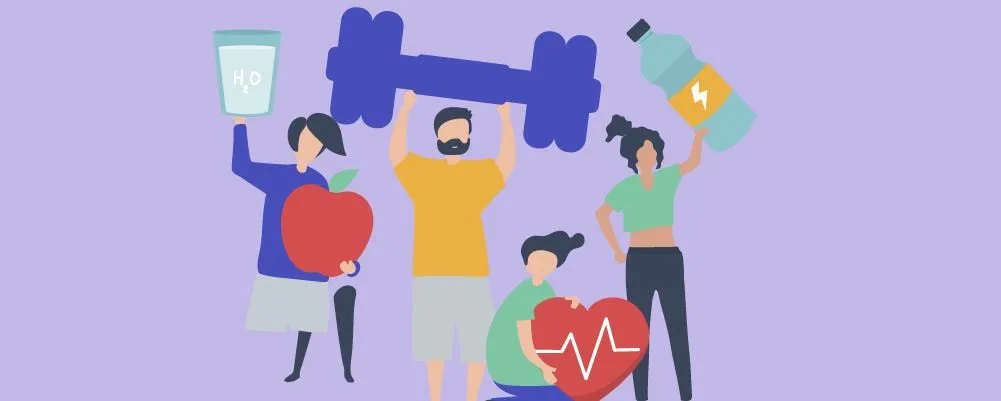
Doctors who treat Cystic Fibrosis know that the best treatment for Cystic Fibrosis has to work for and with the patient.
Sufferers of the disease are given a lot of say about the types of treatment they receive and when they are treated. Effective treatments look different for every person.
Environment And Lifestyle
There are many different treatments for the different symptoms caused by Cystic Fibrosis, and there are a few changes that doctors recommend all sufferers of the disease make to their lifestyle.
Avoid Smoking
Firstly, it is highly recommended that people with Cystic Fibrosis do not smoke. Smoking will only make any issues with the lungs worse. The act will also introduce more bacteria into the body and make infection more likely.
Smoking is something all doctors suggest we should stop as it has negative effects on our mouth, nose, throat, lungs, skin, brain, heart, and much more. It also drastically increases the chance of you getting cancer. All these effects are only amplified in people who have Cystic Fibrosis.
Eat Well And Keep Fluid Levels Up
Because Cystic Fibrosis has such a negative impact on the digestive system, it has been suggested that people with the disease change their diet to be as easy to digest as possible.
This usually means lots of fresh fruit and vegetables, as well as lots of fiber. People with Cystic Fibrosis may also be encouraged to take enzyme tablets to help aid the breakdown of food in their digestive system.
It is also important for people with Cystic Fibrosis to keep as hydrated as they can. The more liquid they consume, the better they will feel. There is also a chance that drinking more water will help to keep the mucus in their body a little thinner.
Wash Hands, Wear A Mask, Work From Home During Flu Season
One of the best things that Cystic Fibrosis sufferers can do is to avoid coming into contact with germs.
The best way to do this is to wash your hands as often as possible and carry hand sanitizer with you for the times that you can't.
When walking in crowded areas, you might want to consider wearing a mask to protect you from issues like the flu and the common cold.
Cystic Fibrosis suffers might want to also consider working from home or homeschooling during the flu season. Particularly, if there is a nasty strain going around.
Get Flu And Pneumonia Vaccines Every Year
Doctors recommend that every year, people who have Cystic Fibrosis get both the flu and the pneumonia vaccinations.
This will reduce the chance of them being hospitalized by either virus that year. It will help to build up their immunity to the disease. It won't stop them from getting it, but it will make them less ill if they do get it.
The flu and the pneumonia jabs change every year, based on the most prevalent and dangerous strains that have appeared over the last 12 months. So it is important that Cystic Fibrosis sufferers get a new jab each year.
Age
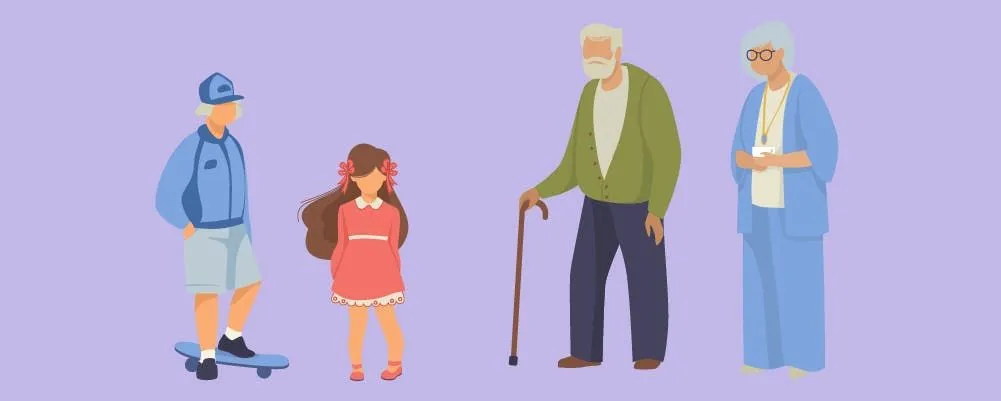
Most people are diagnosed with the disease before the age of 2.³¹
Despite the life expectancy of people with Cystic Fibrosis drastically increasing over the last 50 years - to the point where 80% of people with the disease make it to the age of 40,³² the disease still tends to get worse with age.
Infections can cause permanent damage to the lungs and the pancreas. Over time, this damage can add up. The older the patient gets, the more likely a serious infection killing them will be.
However, the lifestyle changes mentioned in the section above can improve a patient's chances.
How To Cope
Having a disease like Cystic Fibrosis can be challenging mentally as well as physically. Anyone who cares for someone with Cystic Fibrosis can go through a similar process of stress, frustration, and heartbreak.
There is a wide range of support out there for people who have Cystic Fibrosis and the people who care for them.
When the diagnosis is first given, the doctors you are seeing will be able to point you in the direction of local help and support.
If you are a parent of a young child with Cystic Fibrosis then this can be a very overwhelming period of your life.
But you are not alone, there are thousands of other parents out there like you - charities like the Cystic Fibrosis Foundation³³ will be able to put you in touch with them and they may be able to put you into a support group.
The important thing to remember is that every year we learn more about this disease. Every year new treatments for Cystic Fibrosis³⁴ are developed. And the chances of living a long, comfortable, and happy life with Cystic Fibrosis increase with each new development and discovery.
Summary
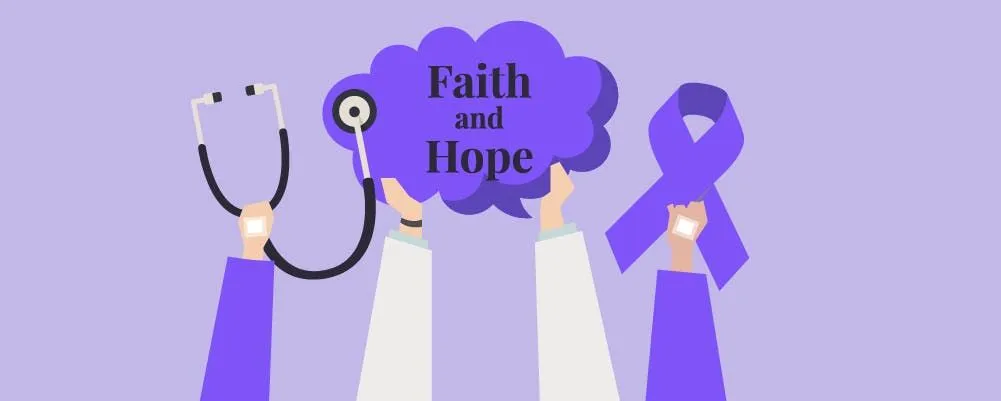
Cystic Fibrosis is a genetic disease that affects the lives of over 70,000 people around the world right now. Roughly 1000 people are diagnosed with the disease every year - most of these diagnoses are done on children under the age of 2.
In America, most Cystic Fibrosis sufferers are expected to make it to age 40. In this country, the disease has a survival rate of 80%.³⁵ In other countries, this rate can be a lot lower.
Every year, more treatments for Cystic Fibrosis are discovered. With the right treatment, it is possible to live a fairly comfortable life with the disease. As the years go on and science advances this is only going to get better.
Cystic Fibrosis is one of the diseases scientists working with CRISPR³⁶ are looking at. Studies are also being done to look at how other forms of medication can be used to treat the disease.
References and Works Cited
https://www.cff.org/intro-cf/about-cystic-fibrosis
https://www.withpower.com/clinical-trials/cystic-fibrosis
https://cysticfibrosisnewstoday.com/cystic-fibrosis-statistics/
https://cystic-fibrosis.com/life-expectancy
https://www.medscape.com/answers/1001602-31223/what-is-the-prognosis-of-cystic-fibrosis-cf
https://www.cff.org/community-posts/2021-05/marlenes-story-living-86-years-cf
https://pubmed.ncbi.nlm.nih.gov/3320707/
https://www.smithsonianmag.com/science-nature/tracking-origins-cystic-fibrosis-ancient-europe-180970238/
https://www.nature.com/articles/d41586-020-02988-w
https://www.ncbi.nlm.nih.gov/books/NBK493206/
https://www.tgh.org/institutes-and-services/conditions/mucoviscidosis
https://www.rbht.nhs.uk/blog/history-and-future-cystic-fibrosis
https://cysticfibrosisnewstoday.com/cystic-fibrosis-statistics/
https://en.wikipedia.org/wiki/Dorothy_Hansine_Andersen
https://www.thelancet.com/journals/lanres/article/PIIS2213-2600(14)70057-8/fulltext
https://rarediseases.org/rare-diseases/cystic-fibrosis/
https://medlineplus.gov/lab-tests/sweat-test-for-cystic-fibrosis/
https://en.wikipedia.org/wiki/Cystic_fibrosis
https://cysticfibrosis.online/mist-tent/
https://www.rbht.nhs.uk/blog/history-and-future-cystic-fibrosis
https://pubmed.ncbi.nlm.nih.gov/12858696/
https://en.wikipedia.org/wiki/Lap-Chee_Tsui
https://medlineplus.gov/genetics/gene/cftr/
https://en.wikipedia.org/wiki/Cystic_fibrosis_transmembrane_conductance_regulator
https://www.cff.org/sites/default/files/2021-12/Know-Your-CFTR-Mutations-Infographic.pdf
https://www.nhsinform.scot/illnesses-and-conditions/lungs-and-airways/cystic-fibrosis
https://www.nhs.uk/conditions/bronchitis/
https://www.nhs.uk/conditions/nasal-polyps/
https://www.cancerresearchuk.org/about-cancer/mesothelioma/symptoms/finger-clubbing
https://www.cff.org/fertility-men-cf
https://www.medscape.com/answers/1001602-31227/at-what-age-is-cystic-fibrosis-cf-typically-diagnosed
https://www.cysticfibrosis.org.uk/news/survival-statistics-what-if-im-already-30
https://www.medscape.com/answers/1001602-31227/at-what-age-is-cystic-fibrosis-cf-typically-diagnosed
https://www.withpower.com/clinical-trials/cystic-fibrosis
https://www.medscape.com/answers/1001602-31223/what-is-the-prognosis-of-cystic-fibrosis-cf